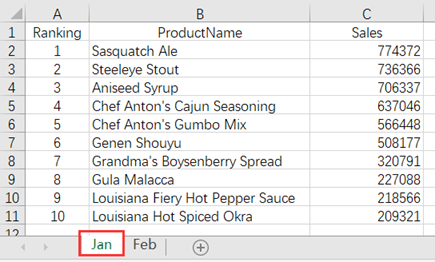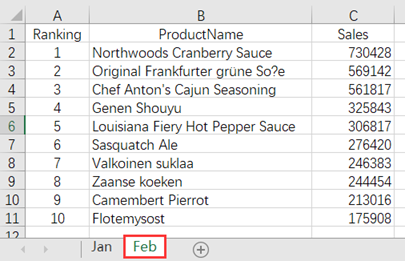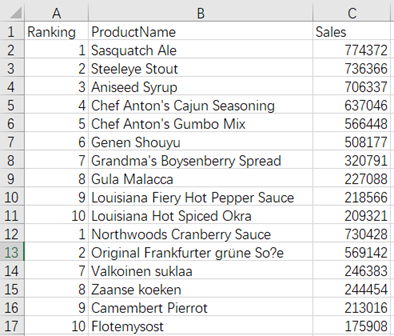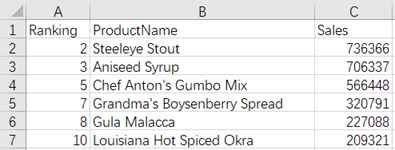8.3 Intersection, union and difference in the case of row-based data - two sets - by key column
The following tables list the sales data of the top 10 products by sales in January and February:


Find out the sales data of the products that make the top 10 in both January and February (the ranking and sales in January are required only):
=spl("=[E(?1),E(?2)].merge@oi(ProductName)",Jan!A1:C11,Feb!A1:C11)

Find out the sales data of products that make the top 10 once or more (the ranking and sales that appear for the first time are required only):
=spl("=[E(?1),E(?2)].merge@ou(ProductName)",Jan!A1:C11,Feb!A1:C11)

Find out the sales data of products that make the top 10 in January but fail to make the top 10 in February:
=spl("=[E(?1),E(?2)].merge@od(ProductName)",Jan!A1:C11,Feb!A1:C11)

esProc Desktop and Excel Processing
8.2 Intersection, union and difference in the case of simple members - multiple sets
8.4 Intersection, union and difference in the case of row-based data - two sets - by whole row
SPL Official Website 👉 https://www.scudata.com
SPL Feedback and Help 👉 https://www.reddit.com/r/esProc_Desktop/
SPL Learning Material 👉 https://c.scudata.com
Discord 👉 https://discord.gg/2bkGwqTj
Youtube 👉 https://www.youtube.com/@esProcDesktop
Linkedin Group 👉 https://www.linkedin.com/groups/14419406/


